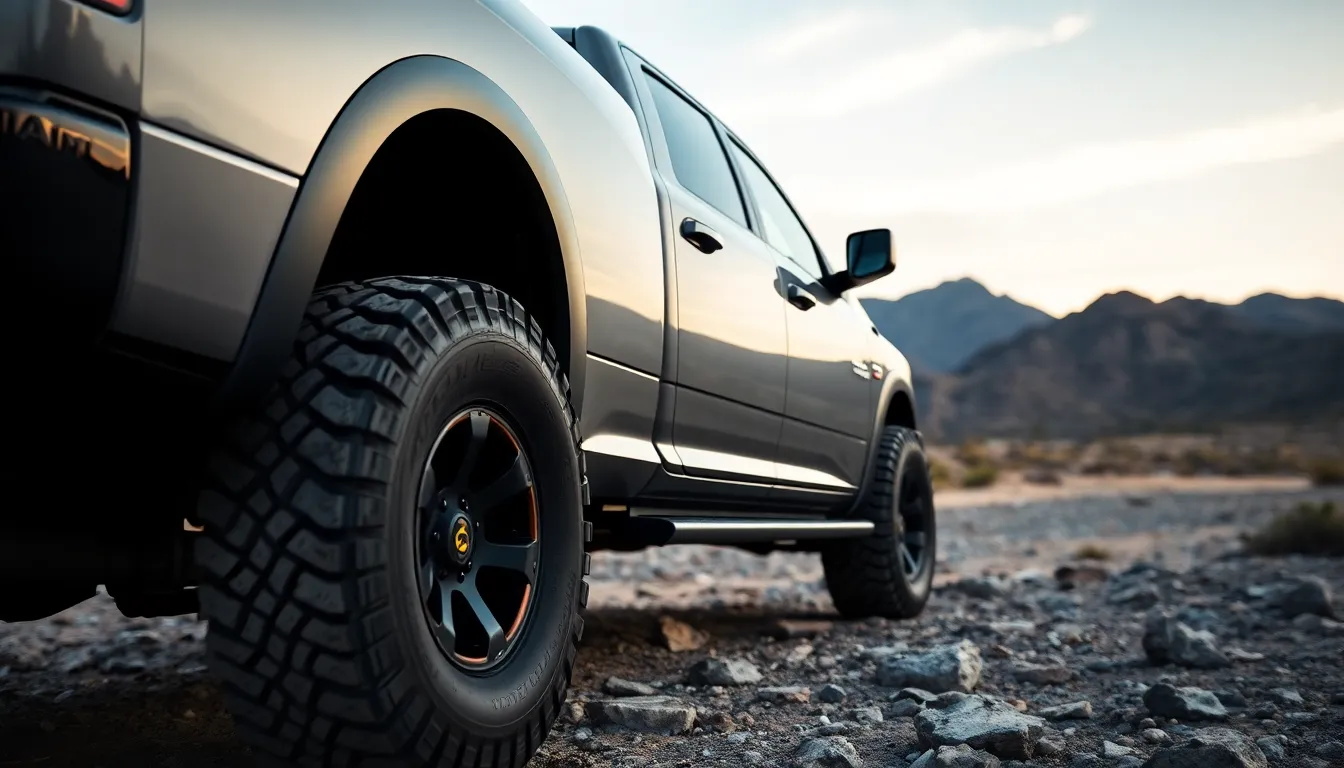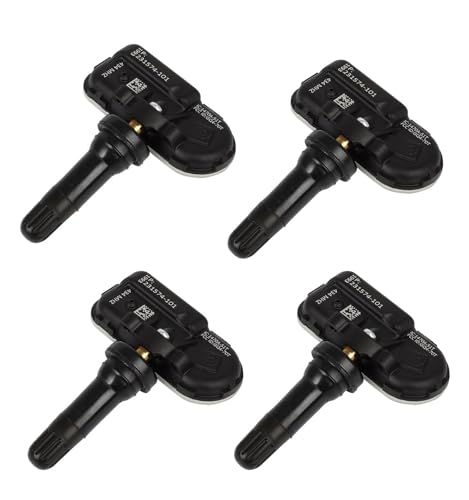When you’re driving a 2016 Ram 1500, having the right tire size isn’t just about looks – it’s about performance, safety, and getting the most out of your truck. Whether you’re hauling heavy loads, handling city streets, or tackling off-road adventures, your tires make all the difference in how your Ram handles every situation.
We’ve seen countless Ram owners struggle with tire confusion, from deciphering those cryptic numbers on their sidewalls to wondering if they can upgrade to larger wheels without compromising their truck’s capabilities. The wrong tire choice can lead to poor fuel economy, reduced towing capacity, and even safety issues that could’ve been easily avoided.
That’s why we’re breaking down everything you need to know about 2016 Ram 1500 tire sizes. From factory specifications to popular upgrades, we’ll help you make the smartest choice for your exact driving needs and budget.
2016 Ram 1500 Factory Tire Sizes
Ram equipped the 2016 Ram 1500 with multiple factory tire sizes based on trim levels and configurations. Understanding these original equipment specifications helps you maintain optimal performance and safety standards.
Standard Tire Size Options
Factory tire sizes for the 2016 Ram 1500 include four primary options that accommodate different driving needs and vehicle configurations.
P245/70R17 serves as the base tire size for entry-level trims, delivering balanced performance for daily driving and light hauling tasks. This size provides adequate ground clearance while maintaining fuel efficiency ratings.
P275/60R20 comes standard on mid-level trims, offering improved road presence and enhanced handling characteristics. The larger diameter provides better braking performance and cornering stability for highway driving.
LT275/70R18 appears on work-focused configurations, featuring light truck construction for increased durability and load capacity. These tires handle heavier payloads and provide better puncture resistance for job site conditions.
P275/55R20 equips higher trim levels with performance-oriented characteristics, combining comfort with responsive handling. The lower sidewall profile reduces tire flex during aggressive driving maneuvers.
Trim Level Variations
Different trim levels receive exact tire sizes that match their intended purpose and target market demographics.
| Trim Level | Tire Size | Wheel Size | Load Rating |
|---|---|---|---|
| Tradesman | P245/70R17 | 17 inches | Standard |
| SLT | P275/60R20 | 20 inches | Standard |
| Big Horn | P275/60R20 | 20 inches | Standard |
| Laramie | P275/55R20 | 20 inches | XL |
| Longhorn | P275/55R20 | 20 inches | XL |
| Limited | P275/55R20 | 20 inches | XL |
Work-oriented trims like Tradesman prioritize durability and cost-effectiveness with smaller diameter options. Luxury trims such as Laramie and Limited feature larger wheels with lower profile tires for enhanced aesthetics and handling performance.
Regular Cab configurations typically receive 17-inch wheel packages, while Crew Cab and Quad Cab models often come with 20-inch setups. Four-wheel drive models maintain the same tire sizes as their two-wheel drive counterparts across all trim levels.
Sport and Rebel packages introduced exact tire combinations that differ from standard trim offerings, featuring unique tread patterns and sidewall designs for improved off-road capability.
Performance Impact of Different Tire Sizes
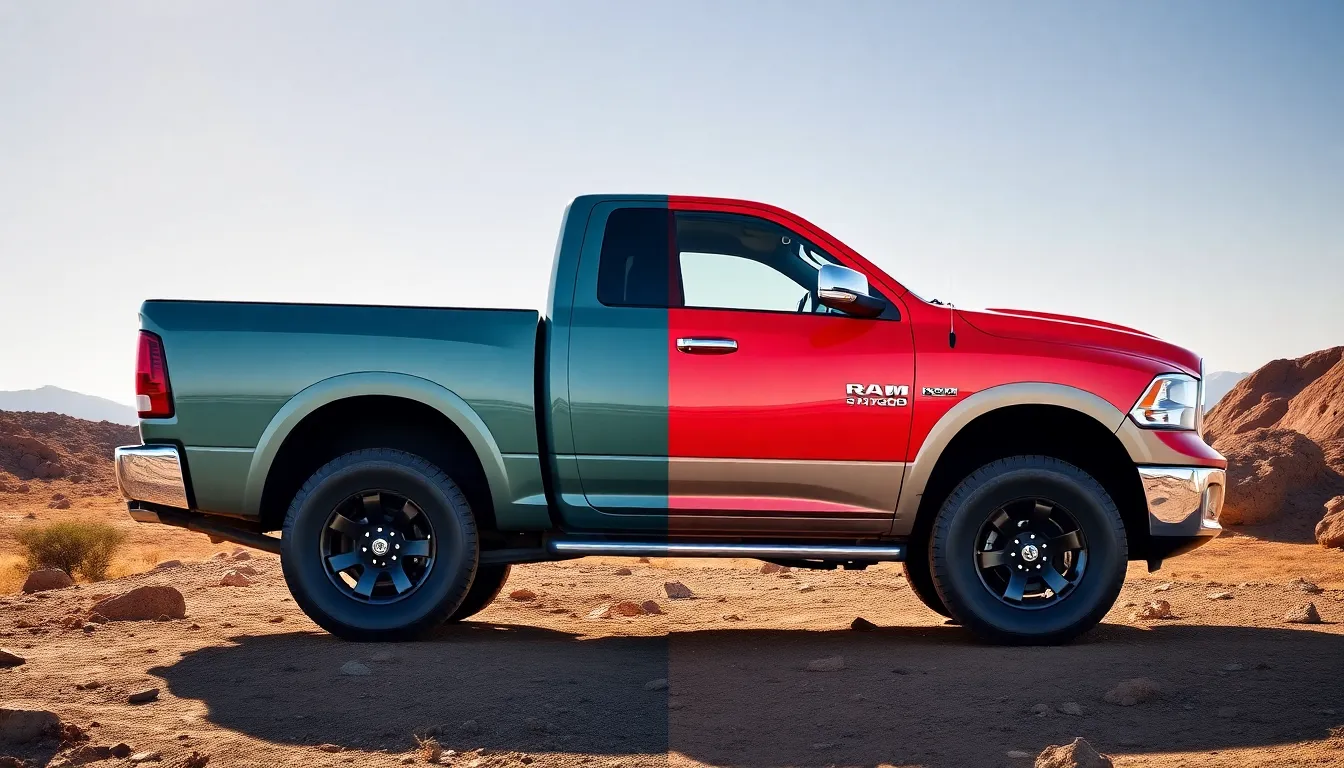
Tire size selection significantly influences your 2016 Ram 1500’s overall performance characteristics. Different sizes create measurable changes in fuel efficiency, handling precision, and ride comfort across various driving conditions.
Fuel Economy Considerations
Larger tire sizes like the 285/45R22 found on Sport Regular Cab models increase rolling resistance and reduce fuel efficiency by approximately 2-4 mpg compared to smaller options. The 275/60R20 configuration used on Big Horn, Express, and Laramie trims provides balanced fuel consumption while maintaining adequate performance capabilities.
Smaller diameter options such as the 265/70R17 on ST, SXT, and Tradesman models deliver optimal fuel economy ratings. These tires create less aerodynamic drag and require reduced engine power to maintain highway speeds.
Weight differences between tire sizes also affect consumption patterns. The 285/70R17 Rebel tires weigh approximately 8-12 pounds more per wheel than standard 265/70R17 options, creating additional rotational mass that engines must overcome during acceleration.
Ride Quality and Handling
The 22-inch wheel diameter on Sport Regular Cab models with 285/45R22 tires provides enhanced steering response and cornering stability through reduced sidewall flex. But, these configurations transmit more road imperfections directly to passengers due to minimal tire sidewall cushioning.
Mid-range options like 275/60R20 tires on Laramie and Sport trims offer balanced performance between comfort and handling precision. The moderate sidewall height absorbs road irregularities while maintaining adequate steering feedback for confident maneuvering.
Smaller 265/70R17 tires on entry-level trims prioritize ride comfort through increased sidewall flexibility. These configurations excel at isolating cabin occupants from minor road surface variations but may experience increased body roll during aggressive cornering maneuvers.
Off-road focused 285/70R17 Rebel tires provide enhanced traction capability on loose surfaces while maintaining reasonable on-road handling characteristics through specialized tread patterns and sidewall construction.
Popular Aftermarket Tire Size Upgrades
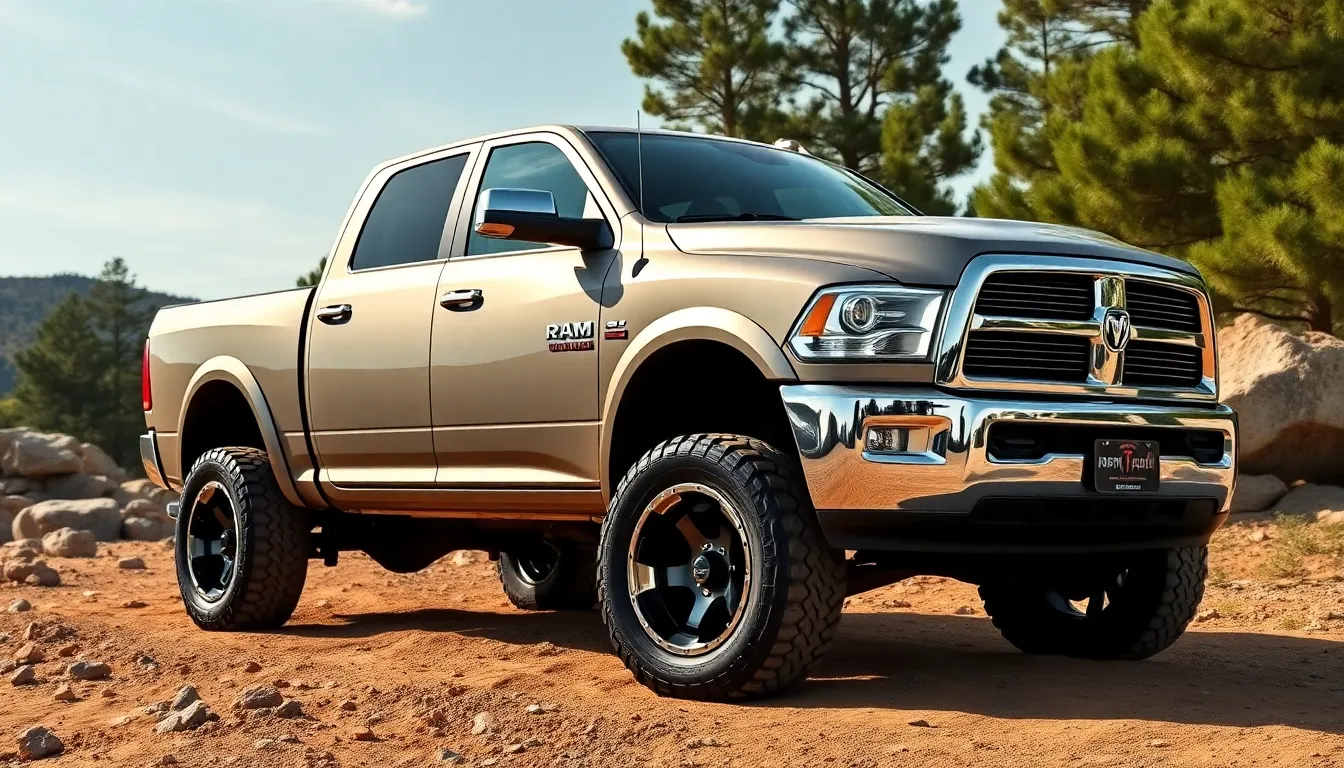
Upgrading beyond factory specifications allows 2016 Ram 1500 owners to enhance performance characteristics and aesthetic appeal. These modifications typically focus on increasing wheel diameter while maintaining overall tire dimensions or selecting specialized configurations for exact driving conditions.
Plus Size Options
Plus sizing involves increasing rim diameter while reducing sidewall height to maintain the original overall diameter. Moving from 17-inch to 20-inch wheels represents the most common upgrade path, with owners transitioning from 265/70R17 to 275/60R20 or 295/55R20 configurations.
The 275/65R18 size offers an excellent intermediate option for trucks equipped with 18-inch wheels. This configuration provides enhanced sidewall strength compared to lower-profile alternatives while delivering improved steering response over factory 17-inch setups.
Owners pursuing 22-inch wheel conversions often select 285/45R22 tires, though this configuration already appears on Sport Regular Cab models from the factory. The 295/55R20 size delivers a broader footprint with taller sidewalls, creating enhanced comfort levels and visual appeal compared to lower-profile alternatives.
Off-Road Tire Configurations
All-terrain and mud-terrain tire selections in factory sizes provide the foundation for improved off-road capability without requiring suspension modifications. These tire types feature aggressive tread patterns designed for enhanced grip on unpaved surfaces while maintaining reasonable on-road performance characteristics.
Larger off-road configurations like 285/75R17 or 35×12.5R17 require lift kits or leveling systems to prevent clearance issues. The popular 35×11.5R18 size frequently appears on trucks with suspension modifications, offering substantial ground clearance improvements for serious off-road applications.
Tread pattern selection becomes critical for off-road performance, with mud-terrain tires providing maximum traction in challenging conditions but generating increased road noise and reduced fuel efficiency during highway driving. All-terrain options balance off-road capability with on-road comfort, making them suitable for drivers who encounter varied terrain conditions regularly.
Tire Size Selection Guide for 2016 Ram 1500
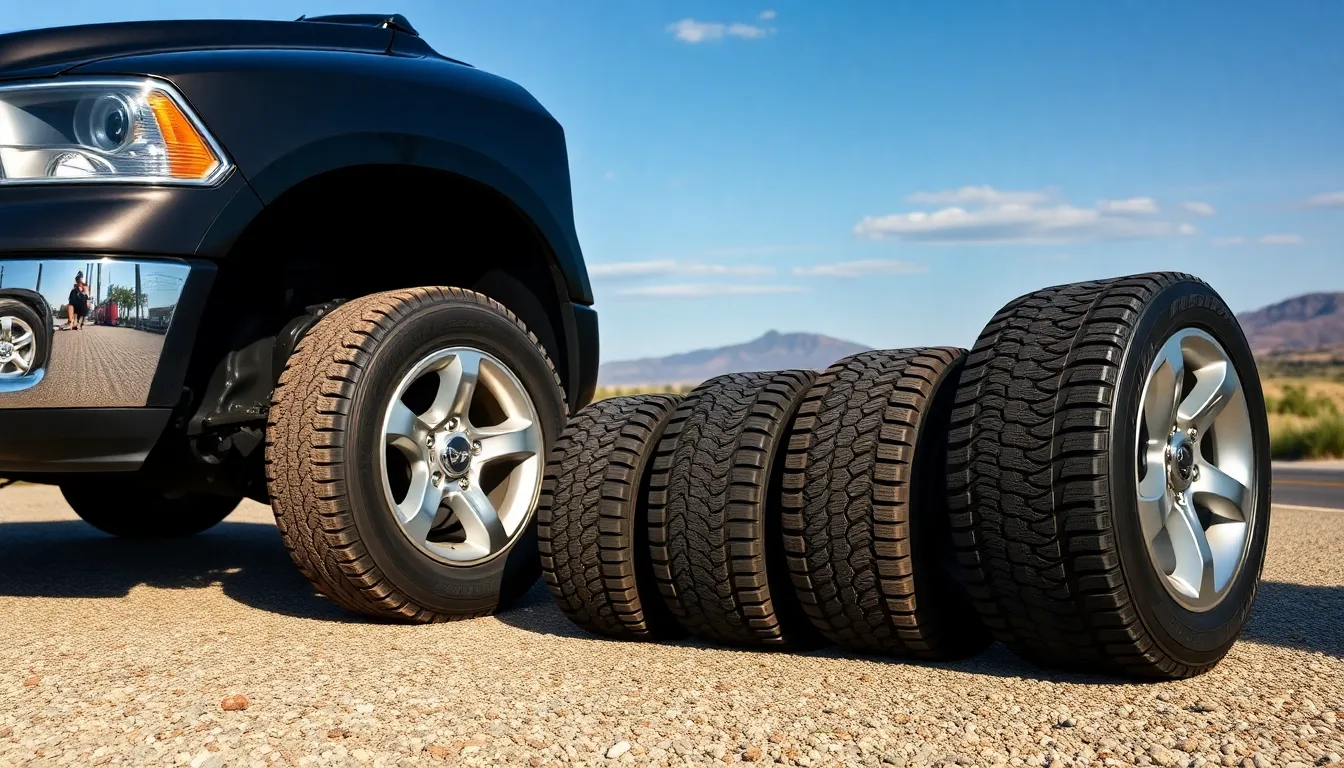
Selecting the appropriate tire size for your 2016 Ram 1500 depends on your exact trim level and intended usage. Each trim comes with factory specifications designed to optimize performance characteristics for different driving scenarios.
Matching Tires to Your Driving Needs
| Trim Level | Tire Size | Best For |
|---|---|---|
| Big Horn | 275/60R20 | Daily driving and moderate hauling |
| Express | 275/60R20 | Fleet and commercial use |
| HFE Diesel | 275/60R20 | Long distance fuel efficiency |
| HFE Gas | 265/70R17 | Maximum fuel economy |
| Laramie | 265/70R17, 275/60R20 | Comfort and versatility |
| Rebel | 285/70R17 | Off-road adventures |
| Sport Regular Cab | 285/45R22 | Performance and appearance |
| Tradesman | 265/70R17 | Work applications |
Off-road enthusiasts benefit most from the Rebel’s 285/70R17 configuration, which provides enhanced traction on loose surfaces and rocky terrain. Daily commuters achieve optimal comfort with the Laramie’s 275/60R20 setup, delivering smooth highway performance and reduced road noise. Fuel-conscious drivers maximize efficiency with the HFE Gas model’s 265/70R17 tires, engineered specifically for improved miles per gallon ratings.
Commercial applications work best with the Express and Tradesman configurations, offering durability for heavy-duty usage while maintaining cost effectiveness. Performance-oriented drivers gravitate toward the Sport Regular Cab’s 285/45R22 combination, which enhances steering response and cornering stability.
Load Rating and Speed Rating Requirements
Load index specifications range from 110 to 115 across different 2016 Ram 1500 tire sizes, directly correlating with the truck’s payload capacity. Each tire must meet minimum load requirements to safely support the vehicle’s gross vehicle weight rating without compromising structural integrity.
Speed ratings typically fall within H or T classifications, depending on the exact model configuration and intended usage patterns. H-rated tires support speeds up to 130 mph, while T-rated options accommodate speeds up to 118 mph for standard driving conditions.
Matching both load and speed ratings to your driving conditions ensures optimal safety margins and tire longevity. Commercial users prioritize higher load ratings for frequent hauling, while recreational drivers focus on speed rating compatibility with highway travel patterns.
Installation and Compatibility Considerations
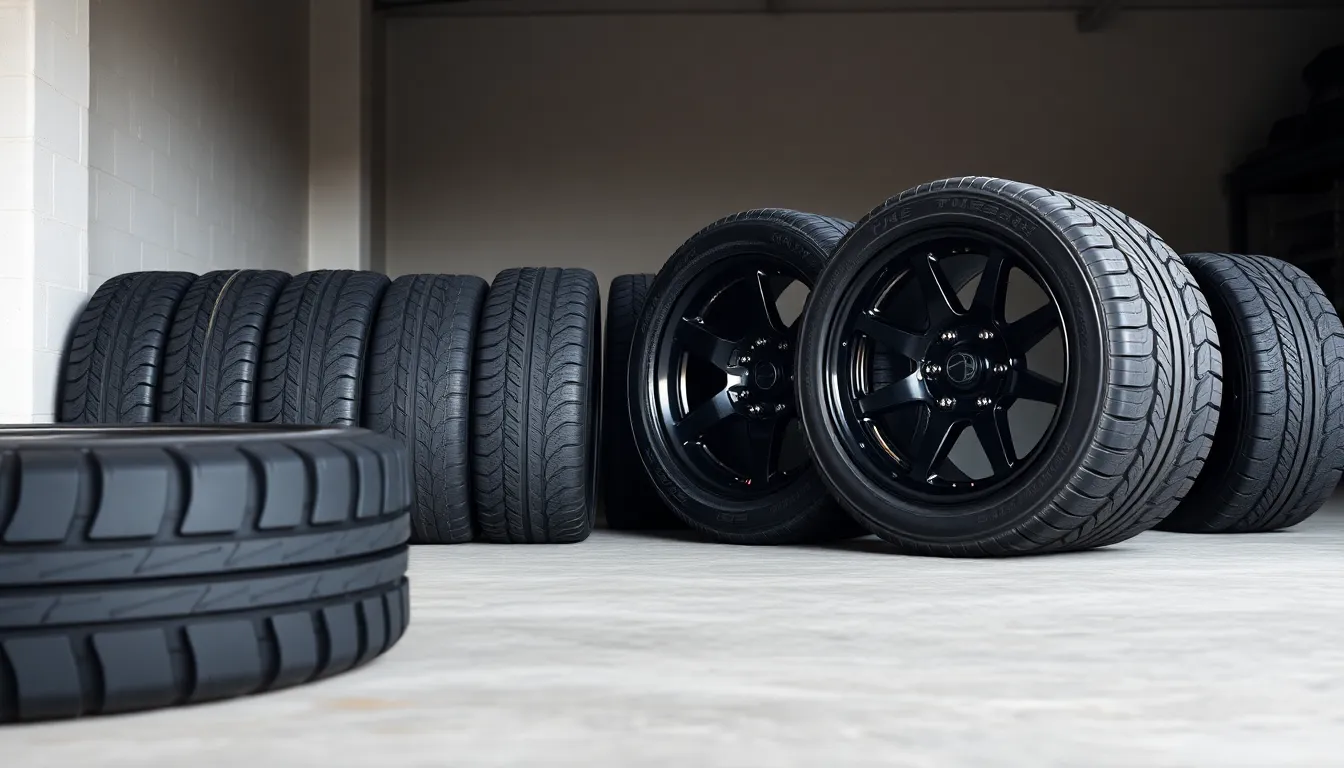
Installation compatibility determines whether your chosen tire size performs optimally on your 2016 Ram 1500. Proper fitment prevents safety issues while maximizing tire performance and vehicle handling characteristics.
Wheel Size Requirements
Wheel diameter specifications for the 2016 Ram 1500 range from 17 inches to 22 inches across all trim configurations. Factory minimum requirements start at 17-inch wheels for base Tradesman and SLT models using 265/70R17 tires. Maximum factory diameter reaches 22 inches on Sport Regular Cab variants equipped with 285/45R22 performance tires.
Compatible wheel sizes include:
- 17-inch wheels: Support 265/70R17 and 285/70R17 configurations
- 18-inch wheels: Accept 275/65R18 and LT275/70R18 options
- 20-inch wheels: Accommodate 275/60R20 standard sizing
- 22-inch wheels: Limited to 285/45R22 Sport applications
Aftermarket wheel upgrades require maintaining original overall diameter to preserve speedometer accuracy and drivetrain compatibility. Plus sizing configurations allow larger rim diameters when paired with proportionally shorter sidewall heights.
Clearance and Fitment Issues
Wheel well clearance prevents tire contact with fender components during suspension compression and steering lock. Factory clearances accommodate stock tire sizes without modification but aftermarket upgrades may require clearance verification. Oversized tires exceeding 285mm width or 32-inch overall diameter risk fender contact during full steering lock or suspension travel.
Bolt pattern compatibility uses the standard 5×139.7mm PCD (pitch circle diameter) across all 2016 Ram 1500 configurations. Rim offset specifications vary between 12mm and 25mm depending on wheel width and model year requirements. Incorrect offset values create wheel positioning issues that affect suspension geometry and tire wear patterns.
Hub bore diameter measures 77.8mm on factory wheels but aftermarket options may require hub-centric rings for proper centering. Load rating requirements mandate wheels support minimum 1,500 pounds per corner for standard payload capacity. Lug nut torque specifications require 135 lb-ft tightening sequence using star pattern methodology.
Temperature expansion considerations affect tire pressure monitoring system (TPMS) sensor compatibility when upgrading wheel sizes. Sensor repositioning or replacement becomes necessary when changing from factory wheel configurations to aftermarket alternatives.
Cost Analysis of Tire Size Options

Tire costs for the 2016 Ram 1500 vary significantly based on size specifications and performance requirements. We’ve analyzed pricing patterns across different tire dimensions to help owners make informed purchasing decisions.
Size-Based Pricing Structure:
| Tire Size | Price Range | Cost Category |
|---|---|---|
| 265/70R17 | $120-180 | Budget Friendly |
| 275/60R20 | $160-240 | Mid Range |
| 285/70R17 | $180-280 | Mid to High |
| 285/45R22 | $250-400 | Premium |
Budget conscious owners benefit most from the 265/70R17 size found on HFE Gas and SLT trims. These tires typically cost 30-40% less than larger alternatives while maintaining adequate performance for daily driving. Standard all season tires in this size range from $120 to $180 per tire depending on brand selection.
Mid range pricing applies to the popular 275/60R20 size used across Big Horn, Express, Laramie, Limited, Lone Star, and Sport trims. Owners can expect to invest $160 to $240 per tire for quality options. This size represents the sweet spot between performance and cost effectiveness for most Ram 1500 applications.
Higher costs accompany the 285/70R17 Rebel configuration due to specialized tread patterns and reinforced sidewall construction. Off road capable tires in this size typically range from $180 to $280 each. Enhanced durability and traction capabilities justify the premium pricing for serious off road enthusiasts.
Premium pricing characterizes the 285/45R22 Sport Regular Cab size due to low profile construction and performance oriented compounds. These specialized tires cost between $250 and $400 per tire. Limited production volumes and advanced technology contribute to elevated pricing in this category.
Brand selection significantly impacts total investment across all size categories. Premium manufacturers like Michelin and Continental command 20-30% higher prices than economy alternatives. Mid tier brands such as Cooper and Falken offer balanced performance and value propositions.
Seasonal considerations affect pricing patterns throughout the year. Spring and fall represent peak replacement periods when demand drives prices higher. Winter months often feature promotional pricing as retailers clear inventory before new model releases.
Long term ownership costs extend beyond initial purchase prices. Larger tire sizes typically experience faster tread wear due to increased contact patch and performance demands. The 285/45R22 configuration may require replacement 15-20% sooner than smaller alternatives under similar driving conditions.
Conclusion
We’ve provided you with everything needed to make the right tire choice for your 2016 Ram 1500. From understanding factory specifications to exploring aftermarket upgrades your decision should align with your driving priorities and budget constraints.
Remember that proper fitment goes beyond just selecting the right size. Consider load ratings wheel compatibility and potential clearance issues before making your final purchase. Whether you’re prioritizing fuel economy off-road capability or enhanced aesthetics the right tire size will transform your driving experience.
Take time to evaluate your exact needs and don’t hesitate to consult with tire professionals when upgrading beyond factory specifications. Your Ram 1500 deserves tires that match its capabilities and your driving style.
Frequently Asked Questions
What are the standard tire sizes for the 2016 Ram 1500?
The 2016 Ram 1500 comes with various factory tire sizes depending on the trim level: P245/70R17 for entry-level trims, P275/60R20 for mid-level trims, LT275/70R18 for work-focused configurations, and P275/55R20 for higher trims. Sport and Rebel packages feature unique combinations like 285/45R22 and 285/70R17 respectively, designed for specific performance needs.
How does tire size affect fuel efficiency on the Ram 1500?
Tire size significantly impacts fuel efficiency. Larger tires like 285/45R22 can reduce fuel economy by 2-4 mpg compared to smaller options. Entry-level sizes such as 265/70R17 optimize fuel consumption, while larger tires create more rolling resistance. Weight differences between tire sizes also affect consumption patterns, making smaller tires the better choice for maximum fuel economy.
Can I upgrade to larger tires on my 2016 Ram 1500?
Yes, popular upgrades include plus sizing configurations like transitioning from 265/70R17 to 275/60R20 or 295/55R20. For off-road applications, sizes like 285/75R17 or 35×12.5R17 are common choices. However, larger off-road tires may require lift kits to avoid clearance issues. Always ensure proper fitment and compatibility with your truck’s specifications.
What tire size is best for off-road driving?
The Rebel’s 285/70R17 configuration is excellent for off-road adventures, offering improved traction on loose surfaces while maintaining reasonable on-road handling. All-terrain and mud-terrain options in sizes like 285/75R17 enhance off-road capability without requiring suspension modifications. Tread pattern selection is crucial for balancing off-road traction with on-road comfort.
How much do different tire sizes cost for the Ram 1500?
Tire costs vary significantly by size. Budget-friendly options like 265/70R17 are most economical, while premium sizes like 285/45R22 command higher prices due to specialized construction. Mid-range options include 275/60R20, with pricing influenced by brand selection, seasonal trends, and performance requirements. Consider long-term ownership costs when making your selection.
What load and speed ratings do I need for my Ram 1500?
Load index specifications typically range from 110 to 115, correlating with your truck’s payload capacity. Speed ratings usually fall within H or T classifications. Matching these ratings to your driving conditions ensures optimal safety and tire longevity. Commercial users and those carrying heavy loads should prioritize higher load ratings for maximum safety.
Do I need to consider wheel compatibility when changing tire sizes?
Yes, proper wheel compatibility is essential. Factory wheel specifications range from 17 to 22 inches, and you must consider bolt pattern compatibility, hub bore diameter, and load rating requirements. Aftermarket upgrades may face clearance issues, and proper lug nut torque is crucial. TPMS sensor compatibility should also be verified when changing wheel sizes.

